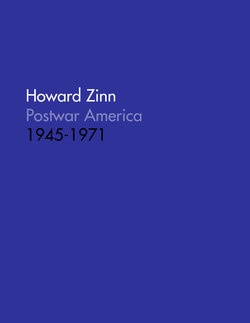Читать книгу Post War America 1945-1971 - Howard Boone's Zinn - Страница 13
На сайте Литреса книга снята с продажи.
I. INTERVENTION
ОглавлениеA. Korea, 1950–1953
On June 25, 1950, the armies of Communist North Korea crossed the 38th parallel into South Korea; the next day, President Truman, presumably to help the South Koreans defend themselves against the attack, announced the use of American air and sea forces in Korea. His announcement was made in response to a UN resolution asking the invaders to withdraw to the 38th parallel. “A return to the rule of force in international affairs would have far-reaching effects,” said Truman. “The United States will continue to uphold the rule of law.”
If the rule of law was represented by the United Nations, American military action stretched it to the breaking point. The UN resolution on Korea had recommended “such assistance to the Republic of Korea as may be necessary to repel the armed attack and to restore peace and security in the area.” The United States, with General MacArthur in command of a largely American “United Nations” force, went further; after pushing the North Koreans back across the 38th parallel, it moved all the way up through North Korea to the Yalu River, on the border of China—-an action that provoked the Chinese into entering the war. They swept southward until the war was stalemated at the 38th parallel.
To call American intervention a blow to “the rule of force” must have seemed bitterly ironic to the Koreans, North and South; in three years of war, American bombers reduced Korea to a desolate, corpse-strewn shambles, with perhaps two million Koreans, North and South, dead. Napalm was used, and a BBC correspondent described the result:
In front of us a curious figure was standing, a little crouched, legs straddled, arms held out from his sides. He had no eyes, and the whole of his body, nearly all of which was visible through tatters of burnt rags, was covered with a hard black crust speckled with yellow pus … He had to stand because he was no longer covered with a skin, but with a crust-like crackling which broke easily … I thought of the hundreds of villages reduced to ash which I personally had seen and realized the sort of casualty list which must be mounting up along the Korean front.
The war was a catastrophe for the Korean people. America’s intervention illustrated, once again, the common moral failure of international diplomacy, as true of liberal capitalist nations as of others: that transgressions—certain transgressions, of course—must be punished, even if it means supporting an undemocratic regime, and even if the punishment falls with devastating effect on the original victims of the transgression. The effect of intervention in Korea was not rectification but destruction.
Not only was it ironic that America should castigate “force,” it was deceitful that it should talk as the champion opponent of aggression. Other cases of aggression in the world did not prompt such a drastic response from the United States. When Arab states invaded Israel in 1948, the United States did not mobilize the UN and its own armed forces for intervention. The fact was that in Korea the United States had a political stake: the dictatorial regime in the south of Syngman Rhee was an American client. Furthermore, America wanted South Korea as a military base on the Asian mainland. It had an eye on Communist China, and it was still operating on the balance-of-power concept that Roosevelt in 1945 thought was outmoded.
Truman’s statement of June 27, 1950, announcing the use of American military force to help South Korea, simultaneously ordered the Seventh Fleet to defend the Nationalist Chinese government on Taiwan. It also directed more military aid to the French forces fighting against the Communist Viet Minh insurgents in Indochina. When the long-range effects of the Korean intervention are considered, on the Korean nation and its people, on Sino-American relations (postwar treaties had assumed Taiwan belonged to China), and on the American attitude toward the French imperialists in Indochina, it is difficult to see how the declared aim of the intervention—to bring peace and stability to Asia—was furthered.
